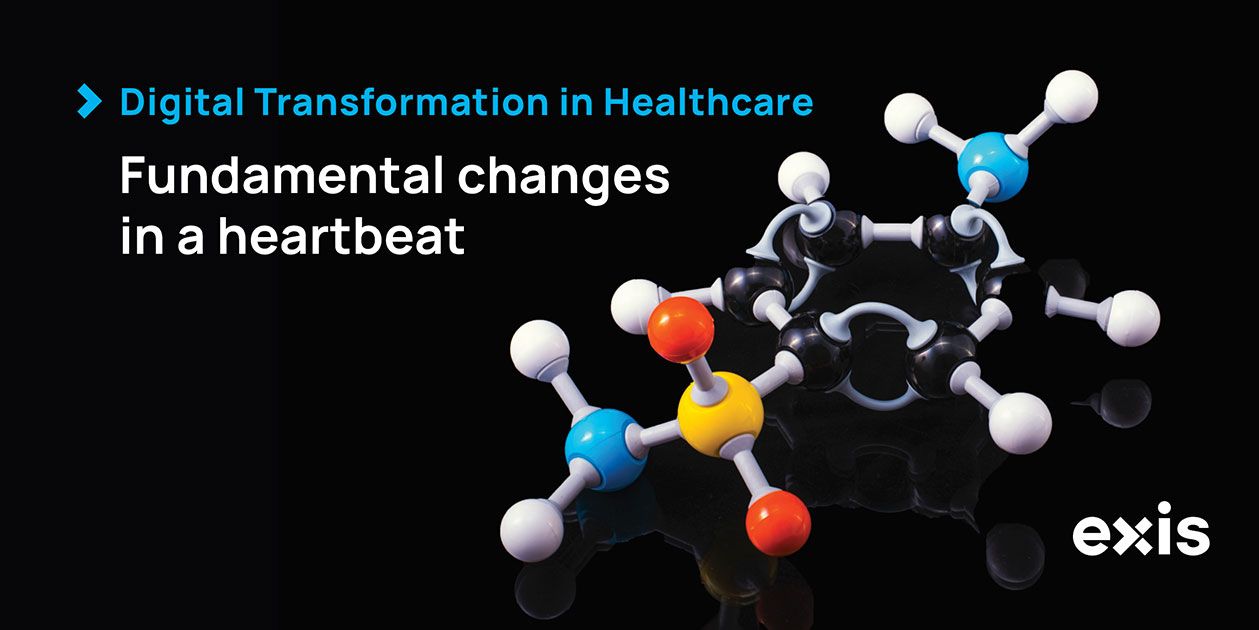Over the years the healthcare industry has been undergoing some reforms. Then came the global pandemic! The pandemic had a profound impact on many healthcare systems making it clear that immediate actions should be taken in terms of how healthcare is delivered and managed.
Today healthcare is rapidly transforming, utilizing technology to improve patient outcomes and enhance operational efficiencies. Digital tools and technologies are used to improve customer interactions, enhance back-office operations and delivery mechanisms, and strengthen supplier relationships. The health sector is rapidly changing to provide better care for patients, while keeping operational costs and hospital rates of turnover and attrition under control.
How is digital transformation transforming healthcare?
Personalized Health Care
Electronic Health Records (EHRs) provide a centralized and secure system for storing and accessing patient information offering key benefits in healthcare:
Improved Quality of Care.
Simplified and direct access to a patient’s medical history allows for more coordinated and personalized care. Personal, clinical, demographic, genomic, and environmental information help healthcare professionals determine which personalized interventions would be preferable for patients suffering from chronic conditions.
Increased Efficiency
EHRs can streamline administrative tasks freeing up time for healthcare providers to focus on patient care. They also facilitate communication and collaboration among healthcare providers ensuring better coordination while eliminating errors.
Better Patient Engagement
Through EHRs patients have access to their own medical records, allowing them to be more informed and engaged in their healthcare.
Improved Population Health Management
EHRs can be used to analyze data to identify trends, patterns, and risk factors. For example, they can identify patients at risk for chronic diseases or monitor the spread of infectious diseases and help the system act proactively and effectively in terms of supply management and cost control. By anonymizing this data, they could become publicly available, as part of the general open data policy and trends.
New products and services development
Healthcare Analytics Platforms have been disrupting typical product- and service-development processes. By collecting, storing, and analyzing data coming from a variety of sources, including electronic health records (EHRs), medical claims data and patient generated data such as wearables and other devices, healthcare companies can build future-proof strategies and develop customer-based products and services.
Through streamlined data healthcare providers can identify patterns and trends and take informed decisions about their patients’ care. Data analytics can identify patients in substantial risk, predict patient outcomes and monitor progress over time. Data is also used to improve operational efficiencies such as optimizing staff schedules, managing patient flow, and reducing wait times.
For healthcare product providers, Healthcare Analytics plays a crucial role in product development. Through data analysis pharmaceuticals and medical devices companies can identify patient segments with unmet needs, track product effectiveness over time, control productivity and develop customer-based marketing strategies.
Moreover, health-related open data could be the basis for numerous health-related applications and algorithms and drive innovative solutions in the healthcare ecosystem.
Optimized Performance
Business Intelligence (BI) Systems play a key role in monitoring financial performance, identifying cost-saving opportunities and optimizing supply chain operations.
Demand Forecasting
By analyzing historical data, trends and patterns healthcare providers can forecast demand for medical supplies, equipment, and medications to maintain appropriate inventory levels and avoid stockouts.
Inventory Optimization
Historical data analysis offers a full view of the inventory levels by showing slow-moving items, overstock items and items that are frequently out of stock. Through inventory optimization healthcare providers reduce waste, improve efficiency, and reduce costs.
Vendor Management
BI Systems are used to evaluate vendor performance and identify cost-saving opportunities. By analyzing vendor data such as delivery times, pricing and quality healthcare providers make informed decisions about which vendors to work with and how to negotiate better deals.
Supply chain Transparency
BI Systems allow for real-time monitoring of inventory level and product movement. By improving supply chain visibility healthcare providers improve operational efficiency and reduce errors and discrepancies.
Improved Patient Experience
Streamlining healthcare processes is essential for improving operational efficiency and enhancing patient experience.
Healthcare organizations use digital technologies such as Robotic Process Automation (RPA) to automate routine tasks such as data entry to reduce errors and enable their staff to focus more on patient care.
Technology also helps to optimize scheduling processes. Improving patient flow reduces wait times, increases staff productivity, and keeps the patients calm and happy.
The healthcare industry will continue to evolve and adapt to meet the changing needs and expectations of customers. As technology continues to advance, big data and advanced analytics, machine learning and automation programs connected, sensor-enabled devices and wearables, will shape the future of the sector.
For over 22 years, EXIS provides technology consulting services to large organizations and SMEs. Contact us to find out what we can do for your business!
















